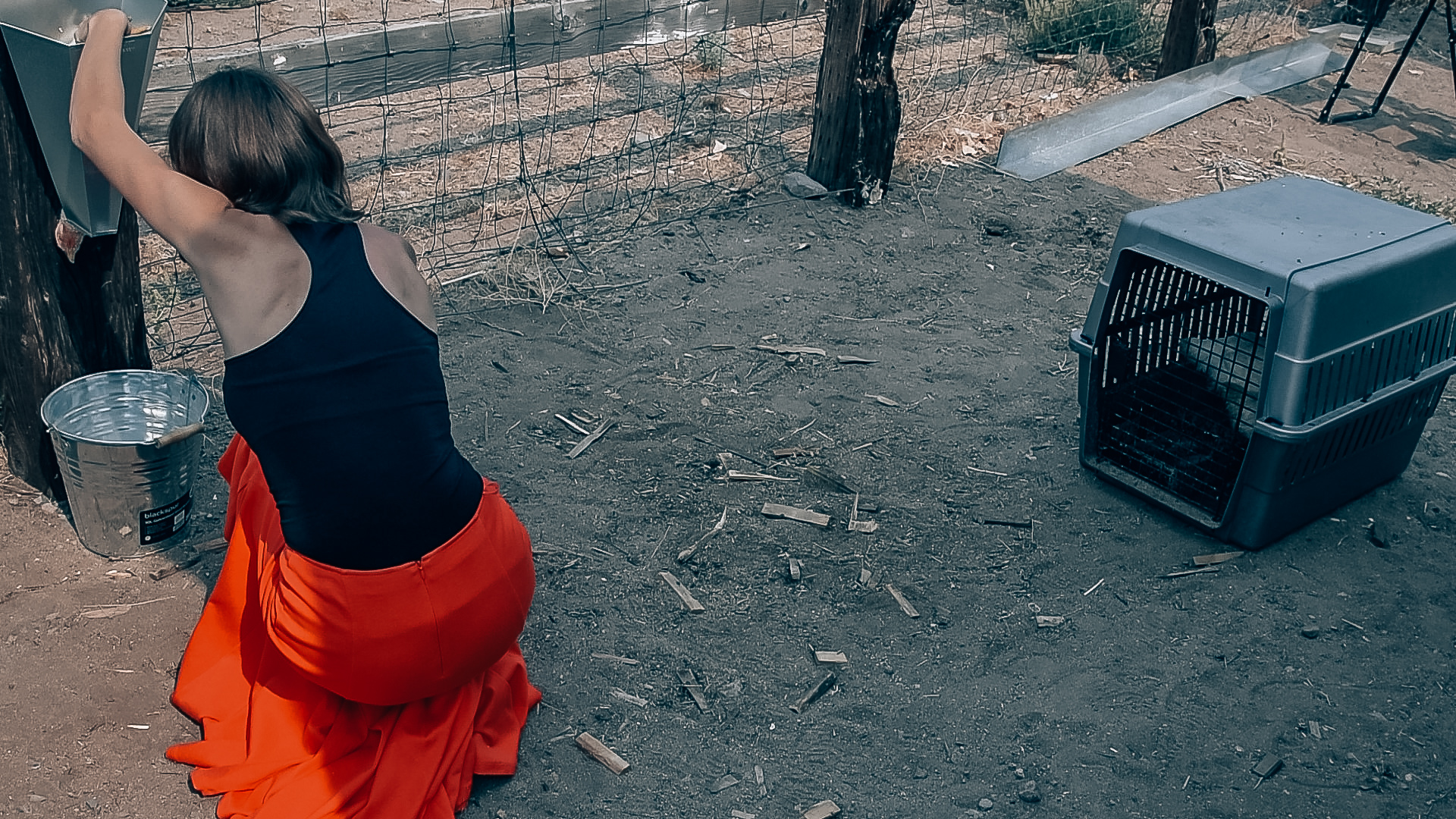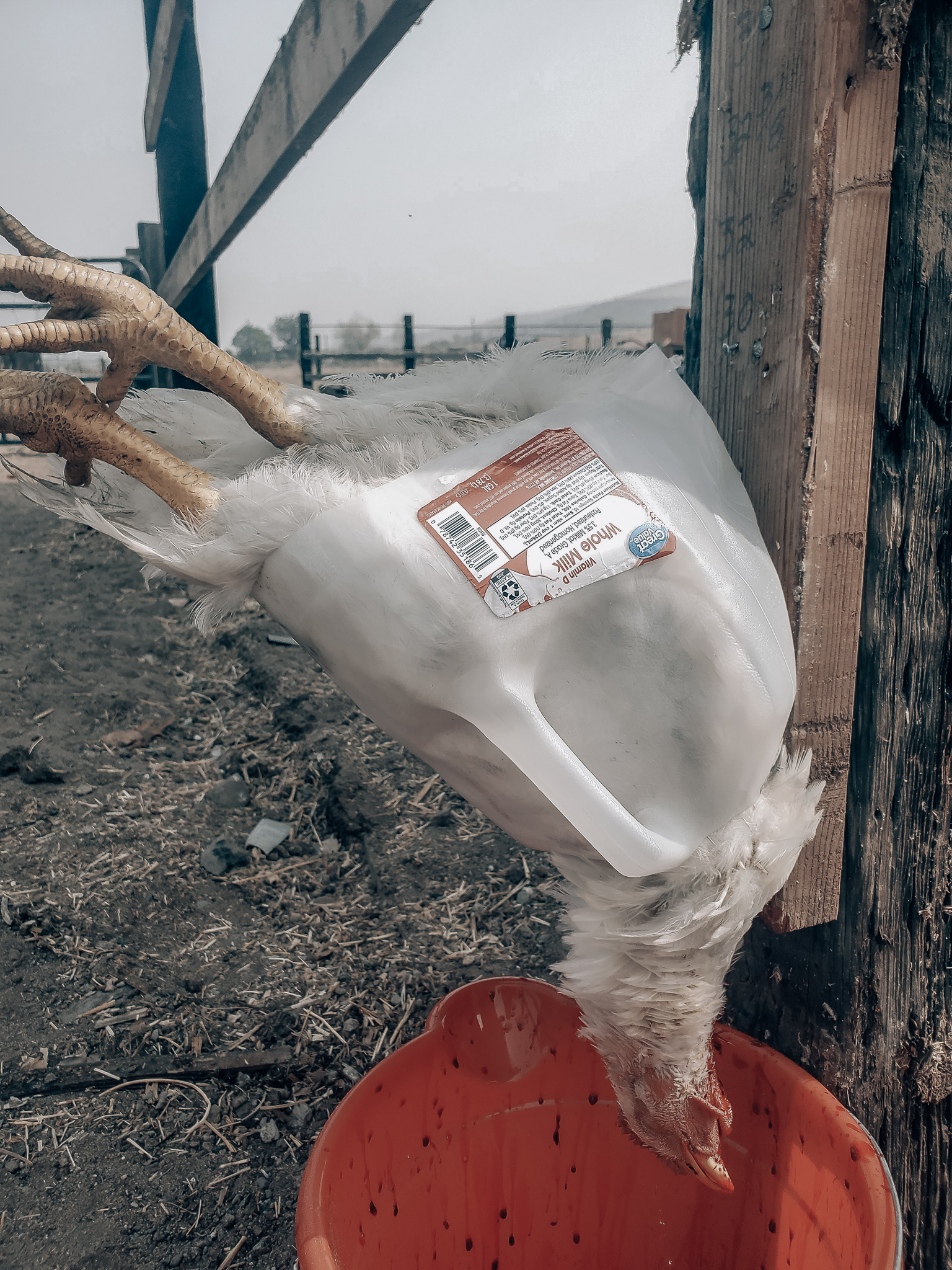It is one thing buying meat from the supermarket. It is another watching someone else kill an animal for meat. But butchering an animal for meat yourself is hard. It is real. I butchered my first rooster using an old milk jug and knife.
Don’t ever take the meat you eat for granted.
Butchering an animal is a necessary job for the home butcher. The most important task is to be able to butcher the chicken with the least amount of pain.
We were blessed with three meat roosters and nine meat chickens. Organic free range meat is the best. We plan to get meat chickens, meat rabbits, pigs, and meat cows come spring time.
We bought a poultry steel restraining cone and chicken de-feather remover which made butcher chickens so much easier. We plan to buy a steel sink with three sections and eventually make an outdoor kitchen that has a screen to keep flies away.
Here are a few steps to help the process of butchering your chicken go smoothly….
- Place the chickens in a small cage because this will ensure that the bird stays calm before you butcher them. Give water but no food for twelve hours. This will help clean out their intestines making the butchering process easier.
- After 12 hours you need to take them out of the cage. Grab your chicken by the feet and turn the chicken upside down. This will help them to stay calm. You could simply use a sturdy wooden block and a sharp hand axe but I hate this method. We did this with my in-laws turkeys and I held the turkey while my husband chopped the head off and the turkey pushed me to the ground. I ended up having my hands all scratched up. I absolutely love the restraining cone. You don’t even have to hold the feet because it is so sturdy. The first time I killed a rooster I used an old milk jug and a sharp knife. I cut the throat and the chicken bleed out. The head was still on. I prefer the cone and axe method best.
- The bleeding out process is important. With the cone it is less messy because you simply put a bucket under the cone. If you don’t have a cone the chicken will flop around getting blood everywhere.
- Next comes the longest task: plucking the bird. We prefer wet plucking to remove the feathers. You want your water to get to 130 degrees Fahrenheit. You want to dip the chicken into the scalding water, dunk it up and down several times to make sure you get all around the feathers. Then place bird on news paper and start removing all the feathers. You can scrape or pull out any of the pin feathers. We got the chicken de-feather remover which only took seconds to remove all the feathers.
- After you take out all the feathers sometimes you’ll still have pin feathers so you’ll need to use a propane torch. You can also use the propane torch to remove a layer of feet skin if you plan to use the feet for cooking. If you have a chicken de-feather remover you can skip this process.
- You want to immediately proceed to cut up the carcass, if you want to do all the chickens together then you want to place the carcasses in a cold bath between thirty two and thirty six degrees Fahrenheit. You never want to freeze your birds until the have been chilled down first because the meat will be less tender later.
- You want to eviscerate the chicken as soon as possible. You first want to remove the head if you haven’t. Cut off the feet at the hock joint. You want to cut off the neck and remove the neck skin, crop, gullet, and windpipe. You now want to lay the bird on its back, with belly facing you and using a sharp knife cut just under the breastbone. You want to be careful not to cut into the intestines. You can now reach in and pull out the intestines, including the gizzard, heart, and lungs. Cut off crop and gullet. Cut the oil gland on the back, near the top of the tail.
- Wash the interior of the carcass with cold running water. Then immediately place it in ice water to chill before cutting it up. We usually don’t cut up the carcass and instead pat them dry and seal them in a bag and place them in the freezer once we let them be in the ice water for a few minutes.
Thank you for reading our blog post. We share a new blog post every Wednesday and Friday.










